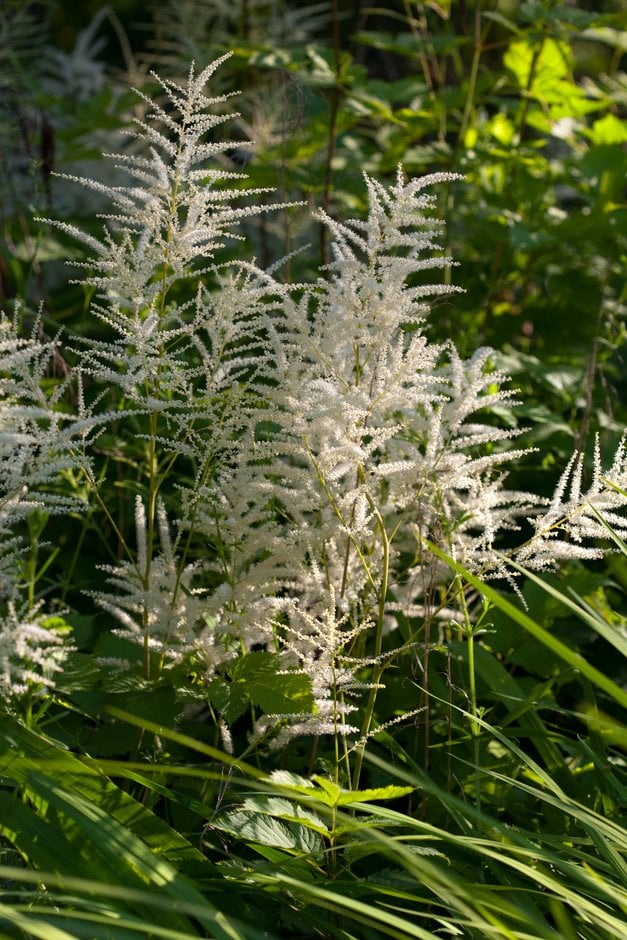Aruncus dioicus
goat's beard
An herbaceous perennial to 2m tall, forming a clump of long leaves composed of numerous opposite leaflets. The foliage takes on yellow and orange autumn colour. In early and midsummer, feathery plumes of tiny, white flowers are produced on stems above the foliage, female plants bear greener, more pendent flowers. Both are good for cutting. Great for pollinators, but only of you get a male form
Other common names
buck's beardSize
Ultimate height
1.5–2.5 metresTime to ultimate height
2–5 yearsUltimate spread
0.5–1 metresGrowing conditions
Moisture
Moist but well–drainedpH
Acid, Alkaline, NeutralColour & scent
| Stem | Flower | Foliage | Fruit | |
| Spring | Green | |||
|---|---|---|---|---|
| Summer | White | Green | ||
| Autumn | Green Yellow Orange | |||
| Winter |
Position
- Full sun
- Partial shade
Aspect
East–facing or North–facing or West–facing
Exposure
Sheltered Hardiness
H5Botanical details
- Family
- Rosaceae
- Native to GB / Ireland
- No
- Foliage
- Deciduous
- Habit
- Clump forming
- Genus
Aruncus are clump-forming rhizomatous perennials with pinnately divided leaves and very small creamy-white flowers, usually unisexual, in large terminal panicles
- Name status
Correct
- Plant range
- Europe, Asia, North America
How to grow
Cultivation
Grow in moist, fertile soil in full sun or partial shade
Propagation
Propagate by division in spring or autumn
Suggested planting locations and garden types
- Architectural
- Cottage and informal garden
- Wildlife gardens
- Cut flowers
- Flower borders and beds
Pruning
No pruning required
Pests
May be susceptible to blackfly and sawfly larvae
Diseases
Generally disease-free
Get involved
The Royal Horticultural Society is the UK’s leading gardening charity. We aim to enrich everyone’s life through plants, and make the UK a greener and more beautiful place.

